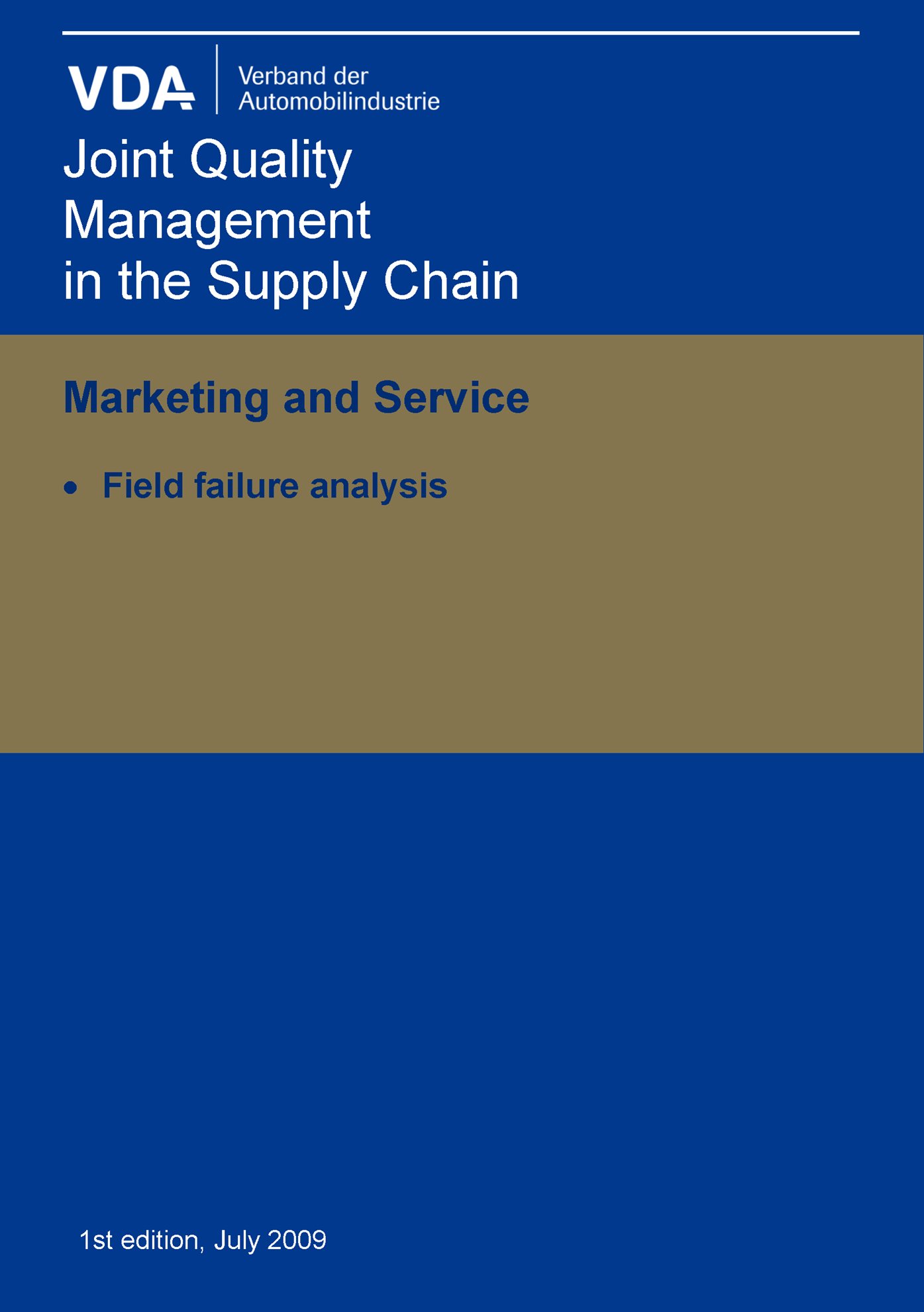Wir benötigen Ihre Einwilligung zur Verwendung der einzelnen Daten, damit Sie unter anderem Informationen zu Ihren Interessen einsehen können. Klicken Sie auf "OK", um Ihre Zustimmung zu erteilen.

VDA Field failure analysis, Joint Quality Management in the Supply Chain Marketing and Service, 1st edition: July 2009
VDA Field failure analysis, Joint Quality Management in the Supply Chain Marketing and Service, 1st edition: July 2009
Name übersetzen
PUBLIKATION herausgegeben am 1.1.2009
| Zugänglichkeit | Ausverkauft |
| Preis | AUF ANFRAGE ohne MWS |
| AUF ANFRAGE |
Produktinformation:
Bezeichnung: VDA Field failure analysis, Joint Quality Management in the Supply Chain Marketing and Service, 1st edition: July 2009
Gewicht ca.: 300 g (0.66 Pfund)
Ausgabedatum: 1.1.2009
Land: Deutsche Publikation
*) Bei der Ware, die nicht vorrätig ist und muss bei dem Herausgeber bestellt werden, werden auch die tatsächlichen Transport- und Verpackungskosten berechnet. Die Kostenhöhe teilen wir Ihnen nach Ihrer Nachfrage auf der E-Mail info@normservis.cz, evtl. auf der Telefonnummer +420 566 621 759 mit.
Die Annotation des Normtextes:
Short description to VDA Volume “Field failures analysis”
Despite every effort in the development and production processes to provide mature, robust problem-free products to the customer, deviations from the expected performance may occur when the vehicle is in use. Depending on the problem, the defective parts or vehicle components are replaced and the vehicle manufacturer (OEM) or supplier may ask for them to be returned, via the OEM, for analysis.
The field failure analysis of defective parts returned from the field plays a fundamental and multiple role in this area of conflict between quality and costs. It is agreed that, of all the failures reported world-wide, an appropriate number will be returned to the component manufacturer, representing the failure event reported in the market (the so-called reference market procedure). The supplier carries out an analysis of the rejected parts. If a failure is verified, the supplier analyses the root cause and determines who caused the problem. A problem-solving process is initiated by the automobile manufacturer and/or the supplier, depending on who caused the problem.
Contents
2
Field failure analysis process
2.1
Concept of the field failure analysis process
2.2
Test status and test strategy in the field failure analysis
2.3
Part Analysis
3
The NTF process
3.1
Triggering criteria
3.2
Procedure
3.3
Data collection and evaluation
3.4
System tests
3.5
Process study
3.6
Software
3.7
Communication / documentation
3.8
Concluding the NTF process
4
The problem-solving process
4.1
Problem analysis
4.2
The 8D-method
5
Planning the field failure analysis process
5.1
Test specification for the part analysis
5.1.1
Description of the test layout and configuration
5.1.2
Test characteristics with specified limits
5.1.3
Specifying and classifying the tests in standard test and tests under load
5.1.4
Change history
5.1.5
Test layouts and method employed
5.2
Planning and description of the NTF process
5.2.1
Guideline
5.2.2
Specifying the triggering criteria
5.3
Test documentation
5.4
Test / checking devices
5.5
Capacity planning
5.6
Readiness of the system, agreement and approval
5.7
Changes to test specifications / test steps
6
Key performance indicators
6.1
Key performance indicators required
6.1.1
Average part analysis period — tBef
6.1.2
Number of OK parts based on part analysis — aio
6.1.3
Average return time — tR
6.2
Recommended key performance indicators
6.2.1
Proportion of failures verified by standard tests — aSP
6.2.2
Proportion of failures verified by tests under load — aBP
6.2.3
Average shipping time — tv
7
Continuous improvement process (CIP)
8
Random sampling strategy
9
Logistics
9.1
Responsibility for transport
9.2
Packing
9.3
Special processes
10
Interfaces and exchange of information
10.1
Data exchange in the field failure analysis process
10.2
Additional data and their interfaces
10.3
Reporting system
10.4
Contact personnel and responsibilities
Empfehlungen:
Aktualisierung der technischen Normen
Wollen Sie sich sicher sein, dass Sie nur die gültigen technischen Normen verwenden?
Wir bieten Ihnen eine Lösung, die Ihnen eine Monatsübersicht über die Aktualität der von Ihnen angewandten Normen sicher stellt.
Brauchen Sie mehr Informationen? Sehen Sie sich diese Seite an.



 Cookies
Cookies
